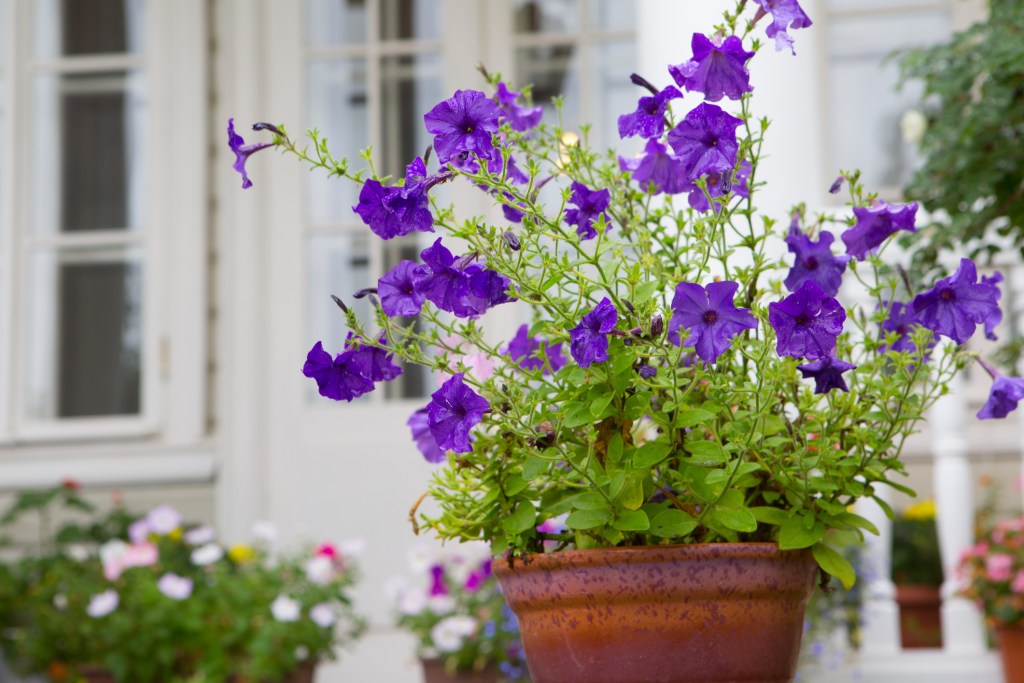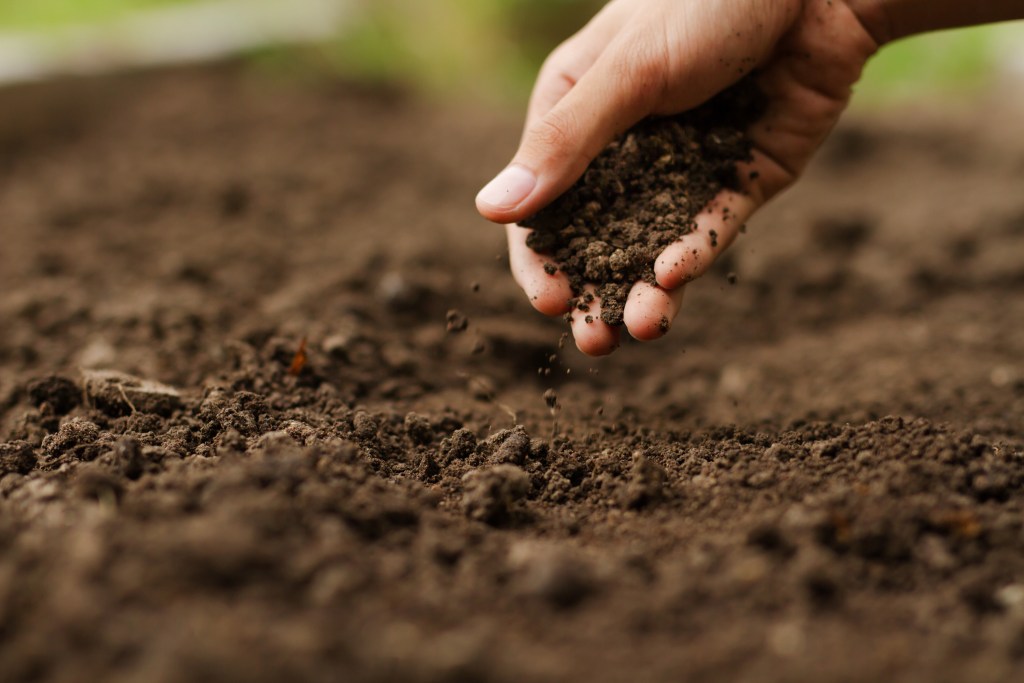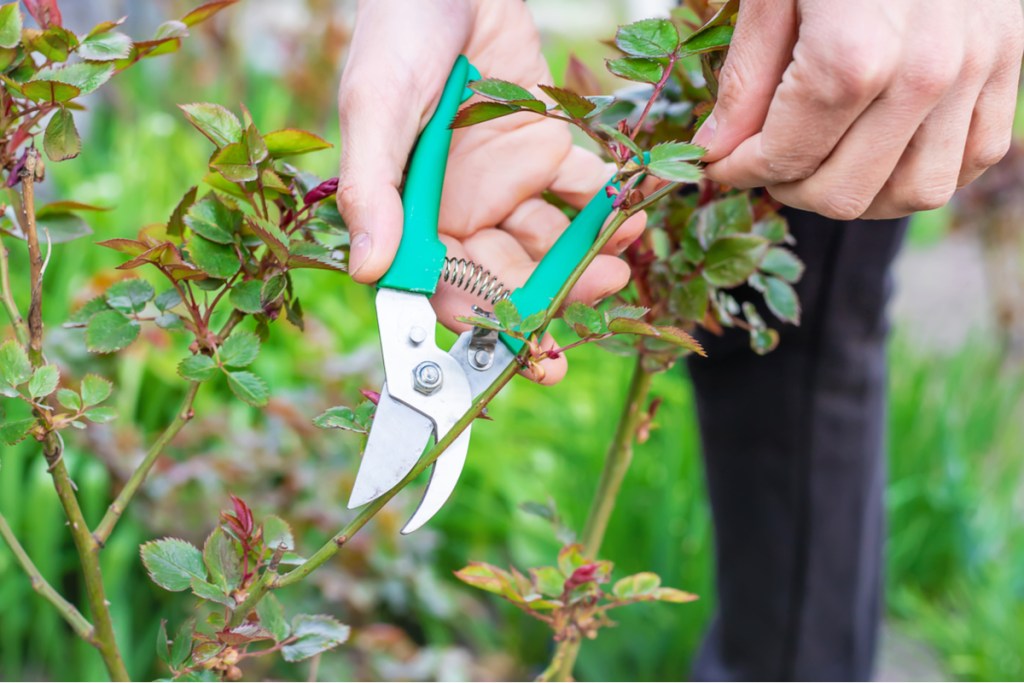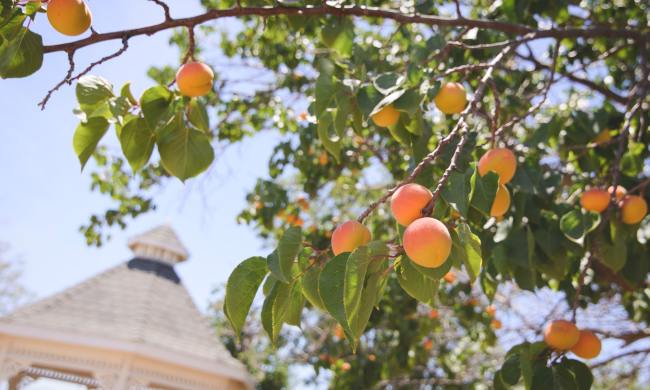Even if you have space limits, starting a garden is still within reach. A small yard, balcony, or patio can still be a productive spot for a container garden. In addition to accommodating small spaces, container gardens are also low maintenance and easy to start, as finding planters is a much more straightforward process than building a garden bed. Plus, you can move your plants indoors or into the shade as needed. Here’s everything you need to know about how to start container gardening.

1. Determine which plants to grow
First and foremost, you want to determine what plants you’ll actually be growing. Most vegetables are annuals, but look up your plant hardiness zone, or climate zone, to see if your area has any perennial veggies. Remember, containers offer your plants and their roots limited growing space, so choose plants that can tolerate some space constraints. Veggies that do particularly well in containers include lettuce, peppers, tomatoes, chard, spinach, and beans.
2. Find containers for your plants
Consider how deep your plant roots run. Plants with longer roots appreciate deeper planters, whereas plants with shallow roots should be in short containers to prevent root rot. You also want to keep in mind container material. Plastic is durable and easy to clean, but it tends to hold on to water longer. On the other hand, terracotta is forgiving if you overwater, but cracking and salt buildup may be issues. And then there’s concrete, which is durable but also quite heavy. Other than conventional planters, you can also look into tubs, kitchenware, and miscellaneous boxes that you can upcycle for gardening purposes.
Make sure your containers have drainage. You can drill holes into your containers or stick nursery pots in more aesthetically pleasing cachepots. Drainage is key because it prevents your roots from rotting.

3. Add well-draining potting mix to your containers
When container gardening, using a well-draining potting mix is of the utmost importance, as garden soil may absorb too much water and drown your plants. You can mix compost or slow-release fertilizer into your potting mix in addition to sources of drainage, such as perlite and bark. Some people like to add window screens or landscaping fabric at the bottom of their containers because a semi-permeable material allows water to pass through while retaining soil and keeping pests out.
4. Sow your seeds or transplant ready-to-go nursery seedlings
You can sow your seeds on top of your potting mix about 1 centimeter apart, then remove weak seedlings in the future. Press your seeds into the soil with a dibber, then sprinkle a thin layer of soil over them and keep the growing medium moist as your seeds germinate. Ready-to-go nursery seedlings are easier to plant, but you will want to repot them immediately to give them breathing room, as they tend to be very densely packed into nursery pots.

5. Place your planters in a sunny location
Most vegetables appreciate 6 to 8 hours of full sun a day, although some plants prefer a bit of afternoon shade. Besides finding the optimal location for your plants, arrange them so that taller plants aren’t shading shorter ones — you can even arrange your plants in a vertical hanging garden outside.
6. Water and feed your plants
A plant plopped into a container will dry out much sooner than a plant kept directly in the ground. Fertilizer also leaches out sooner because of how much water you’re using. That’s why it’s important to regularly water and feed your plants throughout the growing season. Get out your watering can whenever the top inch or two of soil feels dry. Every two weeks or so, you can also go in with a diluted liquid fertilizer — you can also use fish emulsion or manure, if you’d like. To help your plants retain more moisture, add a layer of mulch on the top of the soil.

7. Keep up with maintenance tasks
It’s easy to let your container garden go wild, but even contained plants can get out of hand. You want to regularly prune your plants to remove any dead foliage or spent blooms. Cutting your plants back also helps them grow back more vigorously. If a container plant gets too leggy, you can prune it so that it grows back fuller.
Although growing plants in any capacity requires strategic planning and hard work, starting a container garden is one of the easiest and most space-efficient ways to dip your toes into gardening. After picking out your containers and planting your veggies and flowers, all you have to do is keep up with watering, fertilizing, sunning, and cleaning. Even with a small-scale container garden, you can enjoy beautiful plants and delicious crops throughout the year.



